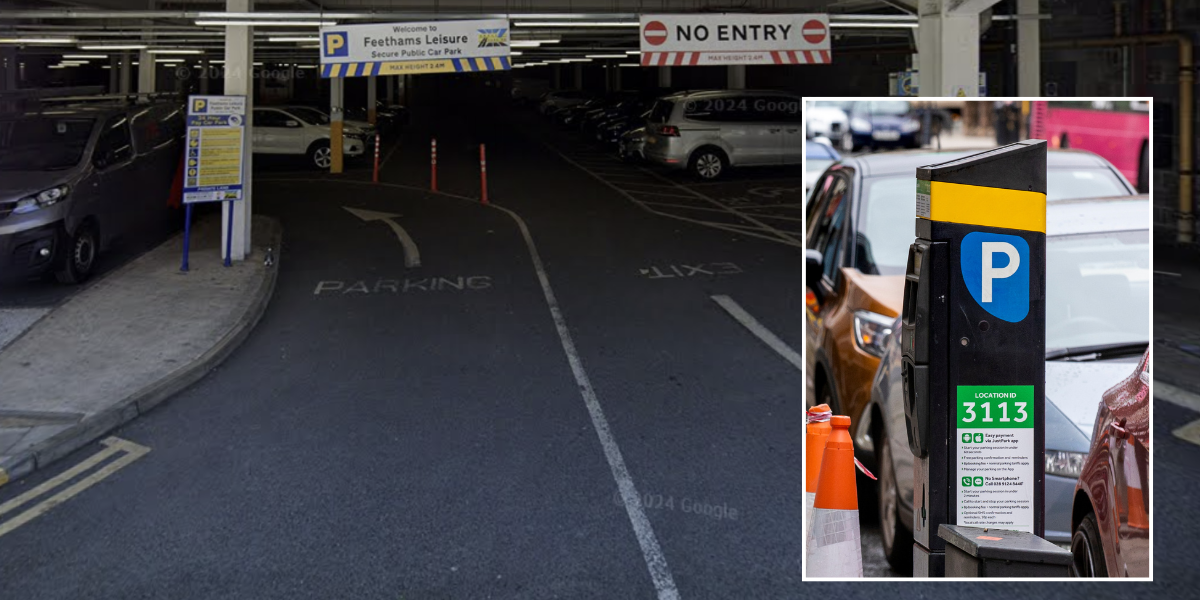Shortly after Donald Trump won his second term as US President last November, an image of the front cover of The Economist magazine was shared online with captions in several languages.
It read "Apocalypse" and showed Trump facing Russian President Vladimir Putin with a series of long-range missiles in the background.
Some of the comments linked to the cover feared the start of World War III and speculated about the use of nuclear weapons.
However, this front cover never really existed, and The Economist did not publish such a story. The alleged cover also cannot be found in the magazine's archive.
It is a disinformation tactic known as 'media spoofing.' More and more reputable media outlets around the world are seeing their logos, websites, social media profiles, and their look-and-feel hijacked to spread false or misleading narratives.
This disinformation strategy is not new, but it seems to be growing in several regions of the world, as we can see by the sheer list of recent examples.
One such case is this screenshot of a false CNN article about Elon Musk's satellite system Starlink carrying out blackouts in Ukraine after President Volodymyr Zelenskyy's contentious White House visit.
Or this cloned website of German magazine Der Spiegel with the headline "Sanctions against Russia are ruining the German economy."
Or this website, resembling that of French daily Le Parisien, saying illegal migrants were a threat to the Paris Olympics.
Then there's also this story, with the logo of the entertainment site E! News, which said USAID had sponsored celebrity trips to Ukraine. DW's Fact check debunked the claim here, which was reposted by X-owner Elon Musk (220 million followers) and by Donald Trump Jr, the son of the US President, with 14.7 million followers on the platform.
However, this is not only a problem in the United States and Europe. Media outlets around the world, from Israel's Haaretz to Nicaragua's La Prensa, have seen their identity hijacked.
In addition, academics in Nigeria studied several cloned social media profiles, especially on Facebook, of two English-language newspapers, Vanguard and Daily Trust.
So, what's behind this disinformation problem and what impact does it have?
And most importantly, how can you determine whether the news you're consuming comes from a real source? DW Fact check has some tips for you.
 La Prensa newspaper in Nicaragua recently revealed its identity had been cloned, and asked readers to check content carefully.Image: laprensani.com
La Prensa newspaper in Nicaragua recently revealed its identity had been cloned, and asked readers to check content carefully.Image: laprensani.comFrom simple foto manipulation to sophisticated media spoofing
All these examples show that fabricated news reports can appear in different forms: from very basic images that are edited to distort a text or include a media logo, to complete websites or social media profiles that pretend to be a well-known media organization – the so-called 'media spoofing.'
Some of the fakes also use artificial intelligence tools. And in most cases, they tend to spread faster during breaking news events like elections, wars, natural disasters, or economic crises.
According to Newsguard, a misinformation and media watchdog in the US, 40 reliable media organizations have been affected by such impersonations since 2018. And it is a problem that is becoming "more widespread with each passing year."
Most of the instances found by the watchdog are linked to Russian influence operations that spread anti-Ukrainian and anti-western narratives.
One such operation is called the "Doppelgänger campaign" and began after Russia's invasion of Ukraine. In Germany, the foreign ministry published a technical report last June detailing how the country was affected by this Russian operation. It includes "dozens of forged clones of mainstream media websites."
McKenzie Sadeghi, who authored Newsguard's analysis, told DW that this kind of disinformation usually follows a similar pattern: the claims are posted en masse by low-profile accounts on platforms like Telegram. Some are picked up by higher-profile individuals, knowingly or unknowingly.
"The fake continues to gain traction and eventually makes its way into Russian state media, which cites the high-profile figures on social media who share the claim rather than the original Telegram source, completely hiding its actual origins," she said.
Undermining the quality of online journalism
 German authorities found "dozens of forged clones of mainstream media websites," like this fake site of Der Spiegel magazine.
German authorities found "dozens of forged clones of mainstream media websites," like this fake site of Der Spiegel magazine.According to Newsguard, the media outlets most affected by imitations are BBC, CNN, Al Jazeera, investigative journalism group Bellingcat, Fox News, The Wall Street Journal and USA Today. DW has also been a target in recent years.
But the pattern, topics and actors are not always the same, as there are clear regional variations.
In Nigeria, cloned pages of Vanguard and Daily Trust have spread rumours about issues like the COVID-19 pandemic, the Boko Haram insurgency or oil prices. These topics have been relevant in the local political debate.
"Cloned media websites are a huge problem, with potential to undermine the credibility and quality of online journalism, public opinion, the democratic process and social cohesion," Abubakar Tijjani Ibrahim, co-author of the study and lecturer at Kano State Polytechnic in Nigeria, told DW.
He added that since cloned media sites lack professional ethics and safeguards, "the handlers of the pages tend to sensationalize, presenting issues in the most provocative way."
So, what can you do to verify the content?
 The URL of this fake website ended in '.top', while the official URL of Le Parisien ends in '.fr.'
The URL of this fake website ended in '.top', while the official URL of Le Parisien ends in '.fr.' Check the authenticity of a piece of information by combining critical observation and analysis with the use of tools that can provide valuable (but not infallible) hints.
A first suggestion is to look for spelling or grammar mistakes, as well as for uneven spacing or blurry text.
If you have doubts, you can open a separate browser window, go to a search engine and actively look for the real news website. You can then contrast the look and feel of both items. Does anything look odd?
While you're on the real site, you can also carry out a keyword search of the alleged piece of information to see if it appears there. And you can check on other media outlets as well. Cross-checking is always key. If something seems off, then there's a likelihood that the story has been made up.
In the case of a screenshot, you can do a reverse image search, using Google Images or Tin Eye, for example. This could offer guidance as to whether it was used before and whether the story has already been debunked and fact-checked.
A reverse image search of the Economist "Apocalypse" cover revealed several fact-checks that disproved the cover's authenticity.
 A reverse image search of a dubious front cover can reveal whether the story was fact-checked.Image: Google
A reverse image search of a dubious front cover can reveal whether the story was fact-checked.Image: GoogleRegarding media outlets' cloned social media profiles, Ibrahim suggested checking whether the profiles provide links to the official news organization's contact details. One of the clones he analyzed on Facebook offered a Gmail account as a contact option.
For cloned news websites, a further red flag is the URL or web address. A Google search would normally provide the correct website address. A look at the cloned site could reveal variations.
Remember the fake Le Parisien website we mentioned above? There, the URL ended in '.top', while the official URL ends in '.fr.' The same happened with the Der Spiegel webpage: the official site is www.spiegel.de; the fake one was www.spiegel.ltd.
McKenzie Sadeghi, of Newsguard, said a further step could be for you to check the domain registration records, for instance on the Go Daddy platform or on Who.is.
"There was a fake article on Spiegel.ltd," she explained. "The domain registration records, which are free, and you can look up, showed that it was anonymously registered in June 2022, while the actual domain for the outlet was registered long before."
So, in summary, remain vigilant and check whether a story really comes from a reliable news source.
This article is part of a DW Fact Check series on digital literacy. Other articles include:
- How do I spot manipulated images?
- How do I spot AI-generated images?
- How do I spot audio deepfakes?
- How do I spot state-sponsored propaganda?
- How do I spot fake social media accounts, bots and trolls?
And here you can read more about how DW fact-checks fake news.
Edited by: Rachel Baig

 By Deutsche Welle (World News) | Created at 2025-03-21 14:31:02 | Updated at 2025-04-05 14:41:34
2 weeks ago
By Deutsche Welle (World News) | Created at 2025-03-21 14:31:02 | Updated at 2025-04-05 14:41:34
2 weeks ago








